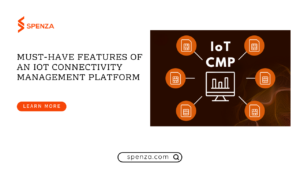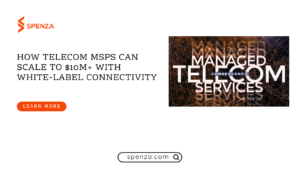Launching and growing an MVNO requires not just innovative telecom solutions but also effective digital marketing strategies. The telecommunications landscape is highly competitive, with traditional carriers and newer MVNOs vying for market share. In this environment, leveraging digital marketing tools and eSIM technology gives MVNOs a strategic advantage by enabling faster customer acquisition, streamlined operations, and reduced costs.
The shift to eSIMs eliminates the need for physical SIM card production and distribution, drastically cutting logistics expenses. Additionally, smart online engagement through platforms like Google Ads and social media ensures MVNOs reach the right audiences with precision-targeted campaigns. With eSIMs supporting remote provisioning and activation, MVNOs can onboard customers more efficiently, improving user experience and minimizing operational bottlenecks.
By combining cost-effective marketing efforts with innovative SIM technology, MVNOs can operate with leaner budgets while offering customers enhanced flexibility. This dual approach is essential for staying competitive in a market saturated with larger carriers and other virtual operators. As a result, MVNOs can not only reduce startup costs but also build stronger brand loyalty and adapt to changing consumer needs more effectively.
How MVNOs Can Leverage Data Analytics in Digital Marketing?
Data analytics plays a crucial role in helping MVNOs enhance their digital marketing strategies. By analyzing customer data from campaigns on platforms like Google Ads and Facebook Ads, MVNOs can optimize marketing efforts in real time. Data insights enable businesses to target the right demographics, identify customer preferences, and predict market trends. This ensures that marketing resources are directed effectively, reducing costs and increasing conversion rates.
Tracking metrics such as customer acquisition cost (CAC) and customer lifetime value (CLV) helps MVNOs refine their strategies to improve campaign performance. These insights also allow MVNOs to offer personalized experiences, enhancing customer satisfaction and fostering long-term loyalty. With continuous data monitoring, MVNOs can adapt quickly to shifting market dynamics, gaining a competitive edge in the saturated telecommunications landscape.
The Role of eSIMs in Enabling IoT Connectivity for MVNOs
The integration of eSIM technology with IoT applications provides MVNOs with new opportunities to expand their services and boost operational efficiency. As IoT devices proliferate across industries like healthcare, logistics, and smart cities, the need for seamless, scalable connectivity becomes critical. eSIMs offer a flexible and cost-effective solution by enabling remote provisioning and subscription management without the need for physical SIMs.
Through eSIMs, MVNOs can support the deployment of IoT solutions by simplifying device connectivity and enabling real-time management across multiple networks. This reduces operational complexities and makes it easier to offer specialized services, such as IoT asset tracking and fleet management. With the ability to handle large-scale IoT deployments efficiently, MVNOs can tap into new revenue streams and position themselves as key players in the evolving IoT ecosystem.
Cost-Effective Marketing Strategies
Digital marketing has become an essential tool for MVNO services to reach and engage with their target audience. With the increasing use of social media, search engines, and online advertising, MVNOs can implement cost-effective marketing strategies to build brand awareness and drive customer acquisition. Platforms like Google Ads and Facebook Ads allow for precise targeting, ensuring that marketing efforts reach the most relevant audiences.
Leveraging Social Media
Social media platforms offer MVNOs a direct channel to communicate with potential and existing customers. By leveraging platforms such as Instagram, Twitter, and LinkedIn, MVNOs can create engaging content, run promotional campaigns, and gather customer feedback. This direct interaction helps build a strong brand presence and fosters customer loyalty.
Reducing Costs with eSIM Technology
eSIM vs SIM adoption simplifies the technical aspects of launching an MVNO and significantly reduces startup costs. The elimination of physical SIM cards translates to lower production and distribution expenses. Additionally, eSIMs enable remote provisioning, allowing MVNOs to activate services instantly and manage subscriptions digitally. This reduces the need for physical retail locations and associated operational costs.
Enhanced Customer Experience
The adoption of eSIM technology enhances the customer experience by providing greater convenience and flexibility. Customers can easily switch between carriers and plans without needing to visit a store or wait for a physical SIM card. This improved experience leads to higher customer satisfaction and retention, which are crucial for the success of MVNO services.
Conclusion
The MVNO market is evolving rapidly, driven by the growing adoption of eSIMs and innovative digital marketing strategies. Platforms like SIM Management Platform solutions are at the forefront of this transformation, simplifying operations and enhancing efficiency. By leveraging these trends, MVNOs can navigate the competitive landscape more effectively and capitalize on new opportunities in the telecommunications industry.
FAQS
eSIM technology provides significant advantages for MVNOs by eliminating the need for physical SIM cards, reducing production and distribution costs. With remote provisioning, services can be activated instantly, streamlining customer onboarding and improving the user experience. eSIMs also allow MVNOs to operate without physical retail locations, minimizing operational costs. Moreover, customers can easily switch between carriers or plans, fostering flexibility and satisfaction. These benefits not only reduce startup costs but also help MVNOs stay competitive by offering seamless connectivity and better service management.
Digital marketing allows MVNOs to target specific customer segments through platforms like Google Ads and Facebook Ads, ensuring campaigns reach the right audience. Social media platforms such as Instagram, LinkedIn, and Twitter enable direct communication with potential customers, enhancing engagement and loyalty. Additionally, digital marketing strategies are more cost-effective compared to traditional marketing, helping MVNOs optimize their marketing budgets. Tools like email campaigns and SEO also contribute to customer acquisition by generating leads and driving conversions. These strategies are crucial for MVNOs looking to build brand awareness and grow in a competitive market.
The primary difference between eSIMs and physical SIMs lies in their format. While physical SIM cards require production, shipping, and manual insertion into devices, eSIMs are embedded directly into devices and can be remotely activated. eSIMs enable seamless switching between carriers without needing to replace the card, enhancing customer convenience. They also eliminate logistics and distribution costs, making them more cost-efficient for MVNOs. Additionally, eSIMs offer better scalability for businesses by supporting multiple profiles on a single device, a key advantage for MVNOs and IoT applications.
eSIMs provide customers with enhanced flexibility by allowing them to switch carriers or plans without the need to visit a store or wait for a physical SIM card. This instant activation improves onboarding, resulting in a smoother user experience. eSIMs also support multiple profiles on a single device, giving users more control over their connectivity. For frequent travelers, eSIMs simplify access to international networks. By offering this level of convenience, MVNOs can improve customer satisfaction and retention, which is critical to sustaining growth and competing effectively in the telecommunications market.
SIM management platforms allow MVNOs to manage their subscribers, monitor data usage, and activate or deactivate services remotely, ensuring operational efficiency. These platforms provide real-time insights into network performance and customer activity, helping MVNOs optimise their services. With automated processes, such as remote provisioning and billing management, these platforms reduce the need for manual intervention, cutting operational costs. Additionally, they enable MVNOs to deliver personalized services by tracking usage patterns, further enhancing the customer experience. A SIM management platform is essential for MVNOs aiming to scale efficiently while maintaining high service quality.






